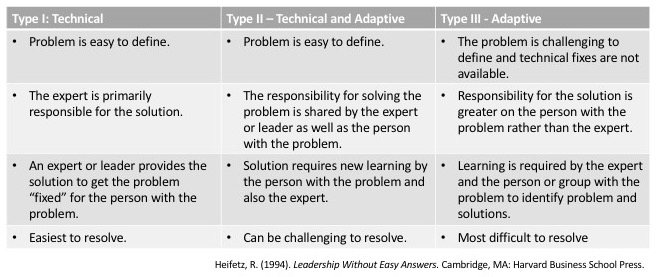As challenging as it is, you cannot make changes for someone else.
So, why if we want to change, can change be so hard?
Maybe, some of that answer lies in the difference between technical and adaptive problems…
What Are Technical and Adaptive Problems?
In the book Leadership Without Easy Answers, Ronald Heifetz explains the difference between technical and adaptive problems.
Technical problems are somewhat mechanical – where you can go to someone (i.e. an expert in their field) and get your problem fixed. Some examples of technical problems include –
- a car breaking down (problem) and going to a car mechanic (solution) to diagnose and fix the problem;
- breaking a limb (problem) and going to a surgeon (solution) to realign the limb; and
- water leaking in the house (problem) and calling a plumber (solution) to find and fix the leak.
Adaptive problems are more difficult to identify and find solutions for as technical fixes are not available. They require people to look beyond the expert for solutions and requires a shift in mindset (i.e. a change in values, attitudes and/or habits of behaviour). It can take time to identify the adaptive problem as well as the solution and requires new learning for all involved. Some examples of adaptive problems include racial tensions, poverty and climate change.
What Are The Differences Between Technical and Adaptive Problems?
There are a number of differences between technical and adaptive problems. The following diagram explains them –

I hope this post has helped you to create awareness of the difference between technical and adaptive problems within change.
If you are ready to reclaim your courage and take the next step towards freedom and opening your heart, why not join our Toolkit?
Reference –
Heifetz, R. (1994). Leadership Without Easy Answers. Cambridge, MA: Harvard Business School Press.

















Leave A Response